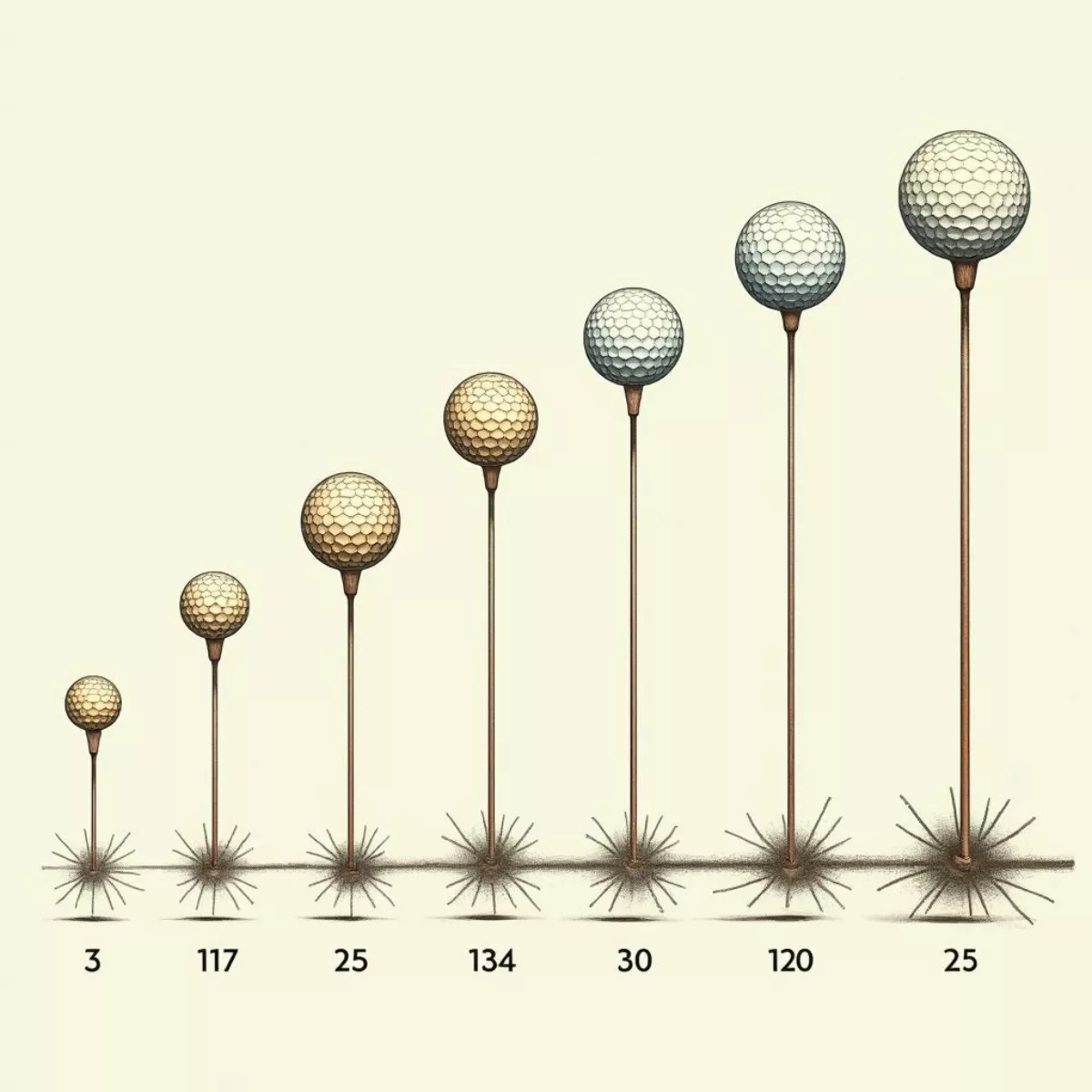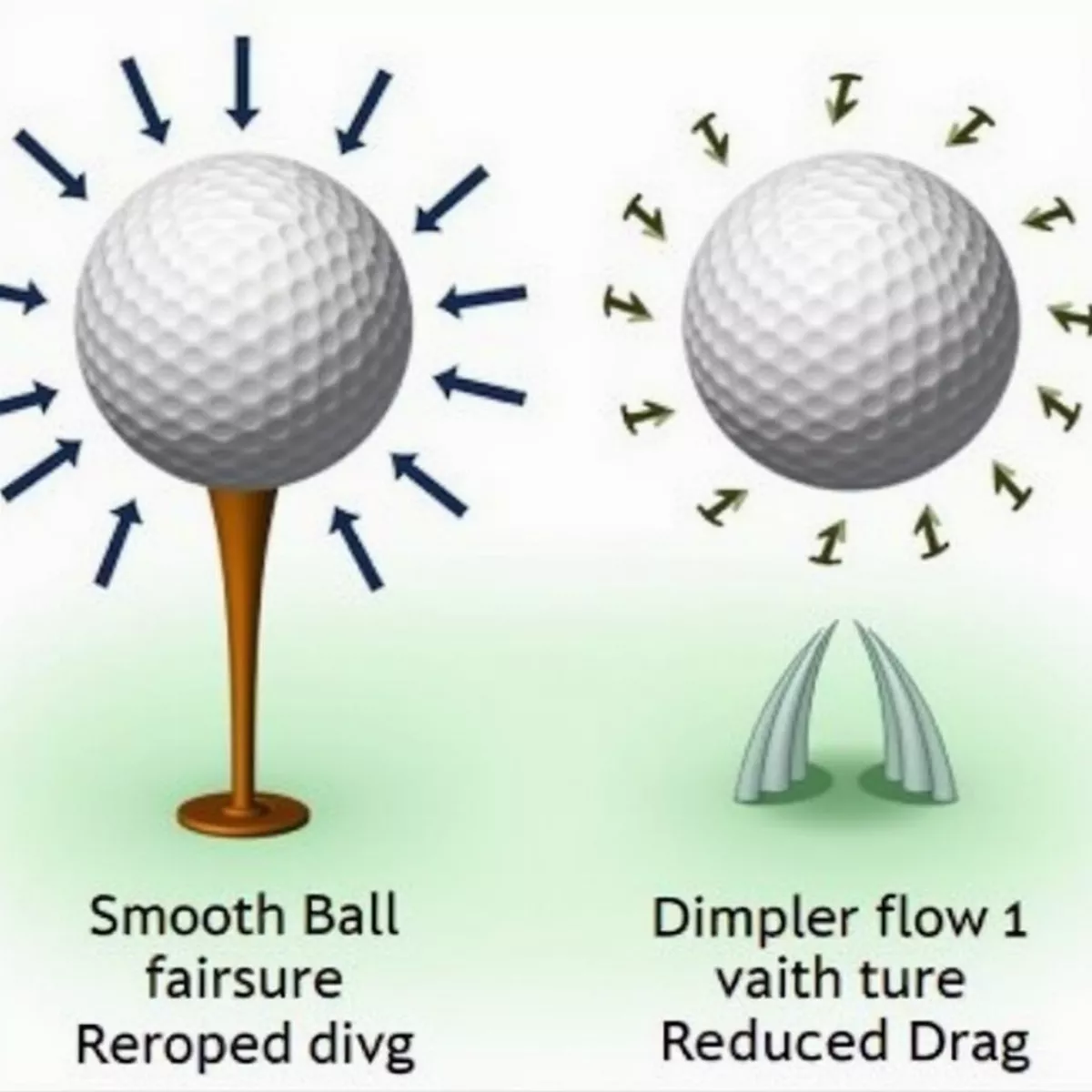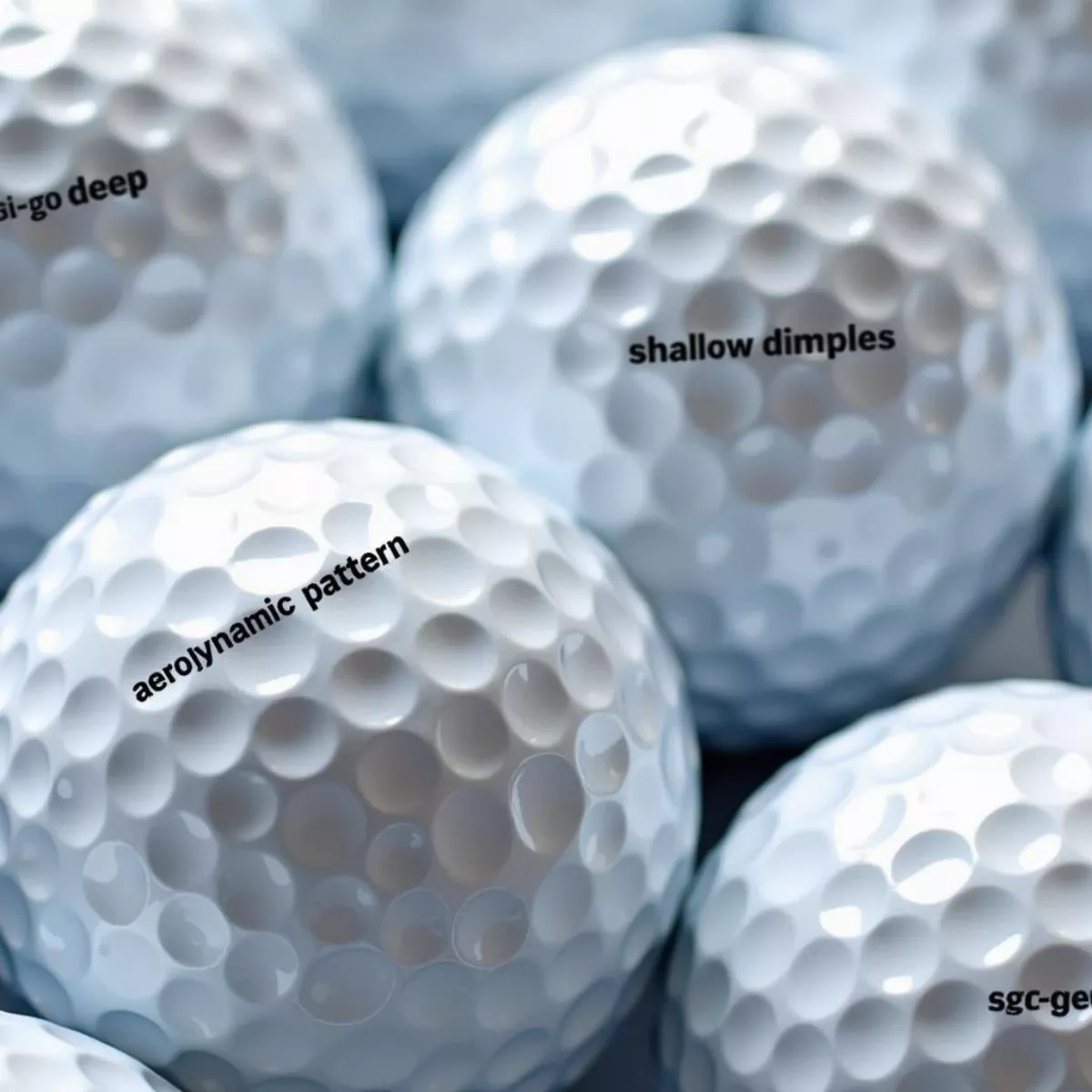Have you ever wondered why golf balls are covered in dimples? It’s like a little mystery that every golfer deals with. Whether you’re a seasoned pro or just starting, understanding the science behind those tiny indentations can enhance your appreciation of the game. So, let’s dive into the reasons golf balls are designed this way and how it relates to their performance on the course.
The Basics of Golf Ball Design
A typical golf ball has a smooth, spherical exterior. However, the surface is usually covered with about 300 to 500 dimples! This design is not just for aesthetics; it significantly impacts how the ball flies through the air.
Key Factors of Golf Ball Dimples:
- Lift: Dimples help create lift, affecting the ball’s trajectory.
- Drag Reduction: They minimize air resistance, allowing the ball to travel farther.
- Spin Control: Dimples influence the ball’s grip on the clubface, allowing more spin.
A Little Bit of History
The dimpled golf ball design evolved over time. Initially, golf balls were made from solid wood or leather. The first “modern” ball, known as the feathery, was crafted with a cork core wrapped in leather. In the mid-1800s, the gutty ball emerged, made from gutta-percha, a natural latex. However, it was the invention of the dimpled design in the 1900s that changed the game forever.
Quote: “Golf is a game that is played on a five-inch course— the distance between your ears.” – Bobby Jones
With the introduction of dimples, players noticed that these new balls flew farther and straighter than their smooth counterparts.
 Golf Ball Evolution Timeline
Golf Ball Evolution Timeline
The Science Behind the Dimples
Let’s break down why dimples are essential for ball performance.
1. Creating Lift
When a golf ball is struck, it moves through the air, generating lift, thanks to its spin and angle. Dimples help create a turbulent airflow around the ball, increasing the pressure difference between the top and bottom surfaces. This results in lift, enabling the ball to maintain a higher trajectory.
How It Works:
- Smooth Ball: Has laminar flow, creating less lift but more drag.
- Dimpled Ball: Generates turbulent flow that increases lift while reducing drag.
2. Reducing Drag
Drag is a force acting opposite to the direction of motion, slowing the ball down. Dimples lessen the drag encountered by the ball, enabling it to travel farther.
Comparison of Drag Force:
| Type of Ball | Drag Coefficient (Cd) |
|---|---|
| Smooth Ball | 0.47 |
| Dimpled Ball | 0.25 |
As you can see, dimples significantly reduce the drag coefficient, allowing the golf ball to travel further distances.
 Airflow Comparison: Smooth vs. Dimpled Golf Ball
Airflow Comparison: Smooth vs. Dimpled Golf Ball
3. Enhancing Spin Control
When you strike the ball, the dimples grip the clubface, allowing for better spin control. Depending on the technique used, players can manipulate how much spin the ball receives, influencing its roll and trajectory.
- Excessive Spin: Can lead to a loss of distance if not managed properly.
- Under Spin: Results in reduced control, especially on approach shots.
The Evolution of Dimple Patterns
The dimple pattern on a golf ball varies by manufacturer, and this variability affects performance. Some common types of dimple patterns include:
- Shallow Dimples: Generally provide a lower trajectory with less spin.
- Deep Dimples: Offer a higher trajectory with increased lift and spin.
Choosing the Right Golf Ball
When selecting a golf ball, consider the following factors related to the dimple design:
- Playing Style: Choose a ball that complements your swing speed and style.
- Conditions: Some balls perform better in windy or wet conditions due to their dimple patterns.
- Spin Preference: Players looking for high spin on approach shots should consider balls with deeper dimples.
The Perfect Dimple Count
Most golf balls have between 300 and 500 dimples. But why is there such a variety? The dimple count can affect the ball’s overall performance and feel. Manufacturers conduct extensive research to find the ideal count that maximizes distance and accuracy for a particular design.
 Golf Balls with Different Dimple Patterns
Golf Balls with Different Dimple Patterns
Conclusion
Pretty fascinating, isn’t it? The simple dimples on a golf ball are a perfect example of how science and engineering can drastically improve performance. Whether you’re trying to boost your distance or perfect your spin, understanding the mechanics behind these dimples can make a huge difference in your game.
Key Takeaways
- Dimples create lift by altering airflow, allowing higher trajectories.
- Reduced drag means greater distances for dimpled balls.
- Spin control is enhanced, affecting shot performance.
- Dimple patterns vary by manufacturer, allowing players to choose based on style and conditions.
FAQ Section
Q1: Why aren’t all golf balls dimpled the same way?
A1: Dimple patterns vary by manufacturer to optimize performance for different playing styles and conditions.
Q2: Can I play golf with a smooth ball?
A2: You can, but smooth balls have more drag and less lift, resulting in shorter distances.
Q3: How did the design of golf balls change over time?
A3: Golf balls evolved from wooden or leather designs to modern dimpled balls for enhanced performance.
Q4: What is the best dimple count for a golf ball?
A4: Typically, most golf balls have between 300-500 dimples. The best count depends on design preferences.
Q5: Do all golf balls spin the same way?
A5: No, the spin is influenced by dimples, construction, and how players strike the ball.
Q6: How do I know which golf ball is right for me?
A6: Consider your playing style, swing speed, and personal preference regarding feel and distance.
Q7: Can weather affect how dimples perform?
A7: Yes, wind can impact how dimples create lift, while wet conditions can change how the ball interacts with the clubface.
Q8: Are there golf balls designed specifically for beginners?
A8: Yes, many manufacturers create balls specifically designed for beginners, focusing on distance and forgiveness.
Q9: What material are modern golf balls made from?
A9: Most modern golf balls are made from a synthetic rubber core covered with a layer of plastic or urethane.
Q10: Can dimples wear out over time?
A10: Yes, frequent play can cause wear and tear on the dimples, affecting performance. It’s recommended to replace worn balls.
Understanding the science behind golf ball dimples not only improves your game but also gives you a deeper appreciation of the sport. Next time you step up to the tee, take a moment to appreciate the engineering marvel that is the humble golf ball!